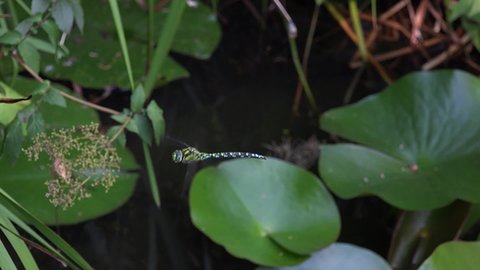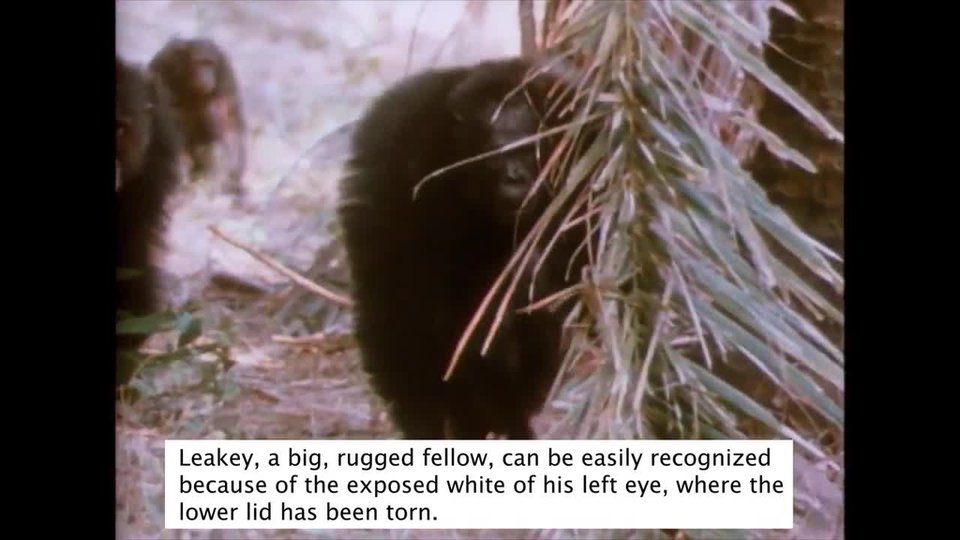In Flight
Thedragonflythatyourecognizeflittingoverfieldslooksverydifferentfromitsnymphform.Themaledragonfly’sblackbodyisabout70millimeters(2.8inches)longanddottedwithdashesofapplegreenandturquoise.Itsbrightcolorsaredesignedtoattractamate.Itstwosetsofwingsstretchoutnearly110millimeters(4.3inches)fromits body.
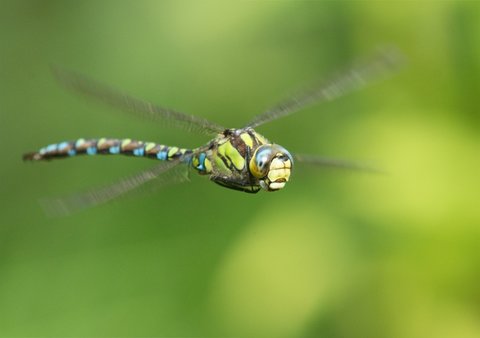
Thismalesouthernhawkerdragonflyisin flight.
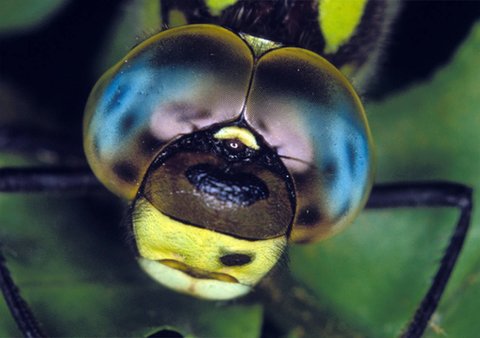
Anadultsouthernhawker'seyeshavethousandsof lenses.
Intheinsectworld,thedragonfly’ssightisunmatched.Itstwocompoundeyesaremadeupofthousandsofindividuallenses.Thefrontofeacheyeisdedicatedtoforwardflight.Thetopofeacheyesearchesfor prey.
Inadditiontothecompoundeyes,dragonflieshavethreesimpleeyes.Eachconsistsofasinglelens.Theseeyesformatriangleonthetopoftheheadbetweenthecompoundeyes.Nervesconnecttheseeyesdirectlytothedragonfly’sflightmuscles.Theygiveinformationaboutthedragonfly’srelativepositionto prey.
Likeotherdragonflies,thesouthernhawkerusesitstwosetsofwingstoflyforward,backward,andsideways.Itcanswoop,hover,andsoar.Itcanbeatitswingstogetherormoveeachoneseparately.Tofly,thewingstwistinafigure-eight motion.
Havingtwosetsofwingsmeansthedragonflydoesn’thavetoworkashardassomeinsectstokeepitselfairborne.Forthesouthernhawker,that’sabout30beatsasecond.Fortheaveragemosquito,it’smorelike800beatsasecond.Itmighttakethesouthernhawkerlesseffort,butitcancertainlyflyfast—upto54kilometers
(34miles)an hour.
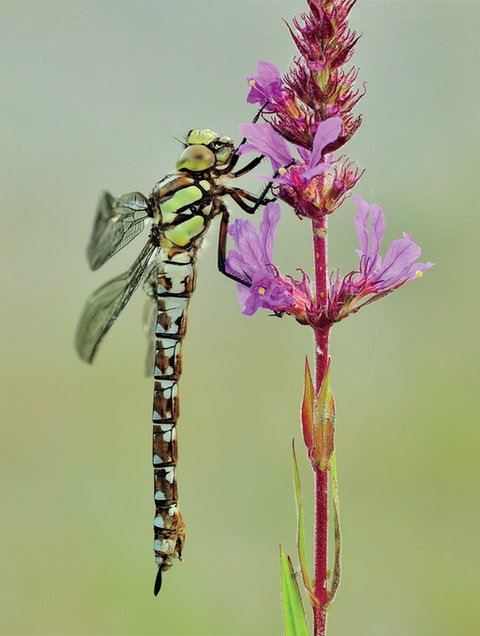
Dragonflieshavesixlegs,butmostcannot walk.
Thissouthernhawkerisonthehuntforflying insects.
FocusedHunter
Whenthesouthernhawkerhunts,itbecomesadeadlypredator.Adragonfly’ssuccessrateisabout95percent.Comparethattoothertoppredatorslikelions—at25 percent—andyoucanseehowsuccessfulthisinsect is.
Allpreyiscaughtandeaten“onthewing,”meaningwhilethedragonflyisinflight.Theabilitytointerceptpreywhileflyingattopspeedsisacomplicated process.
Sincebothpredatorandpreyaremoving,thedragonflyhastobeabletopredictwherethepreywillbeinordertocatchit.Todoso,itmustcalculatethreethings:thedistancetoitsprey;thedirectionthepreyismoving;andthespeedthatitisflying.Inthespanofmilliseconds,thedragonflyplotsits course.
Thedragonflyholdsitslegsforward,justunderitsjaw,toformabasket.Itscoopsuptheprey.Thelongspinesonitslegsgriptheprey.Thedragonflybitesoffanddiscardstheprey’swingsbeforeeatingitsbody.Dragonfliescaneathundredsofinsectsina day.
Eatingandmatingarean adultsouthernhawker’sonlytwojobs.Thefemalesquicklylaytheireggs.Withintwomonths,thesouthernhawkeradultsdie.Theireggsarewaiting,though,forthelifecycletobegin again.
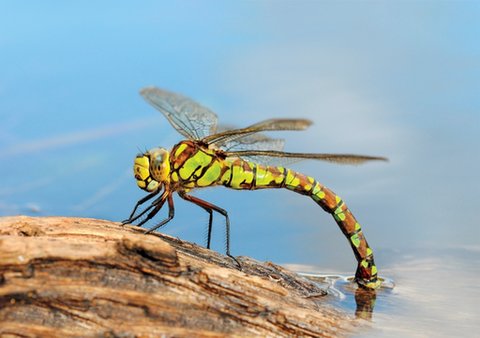
Femaleslaytheireggsinthe water.
